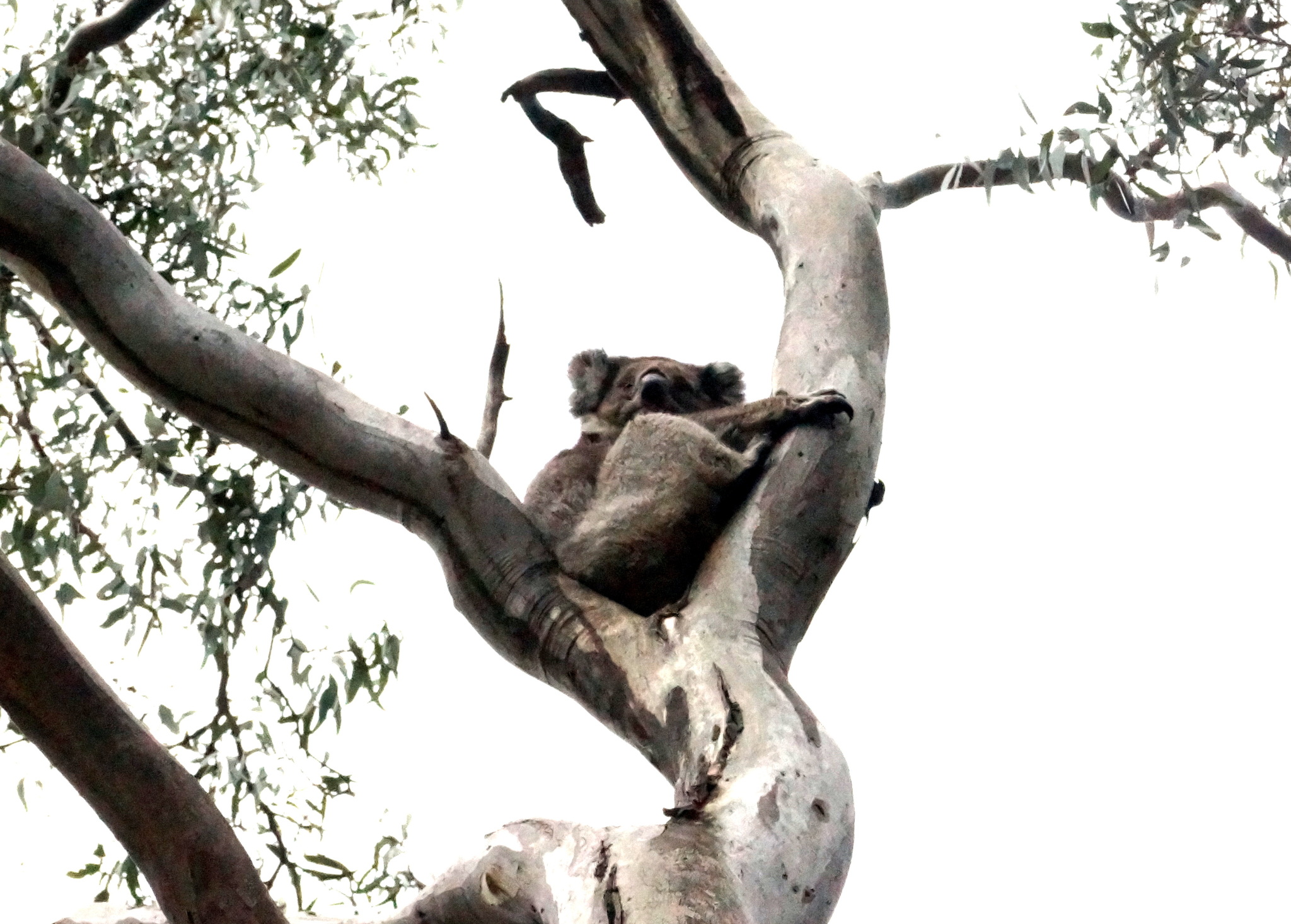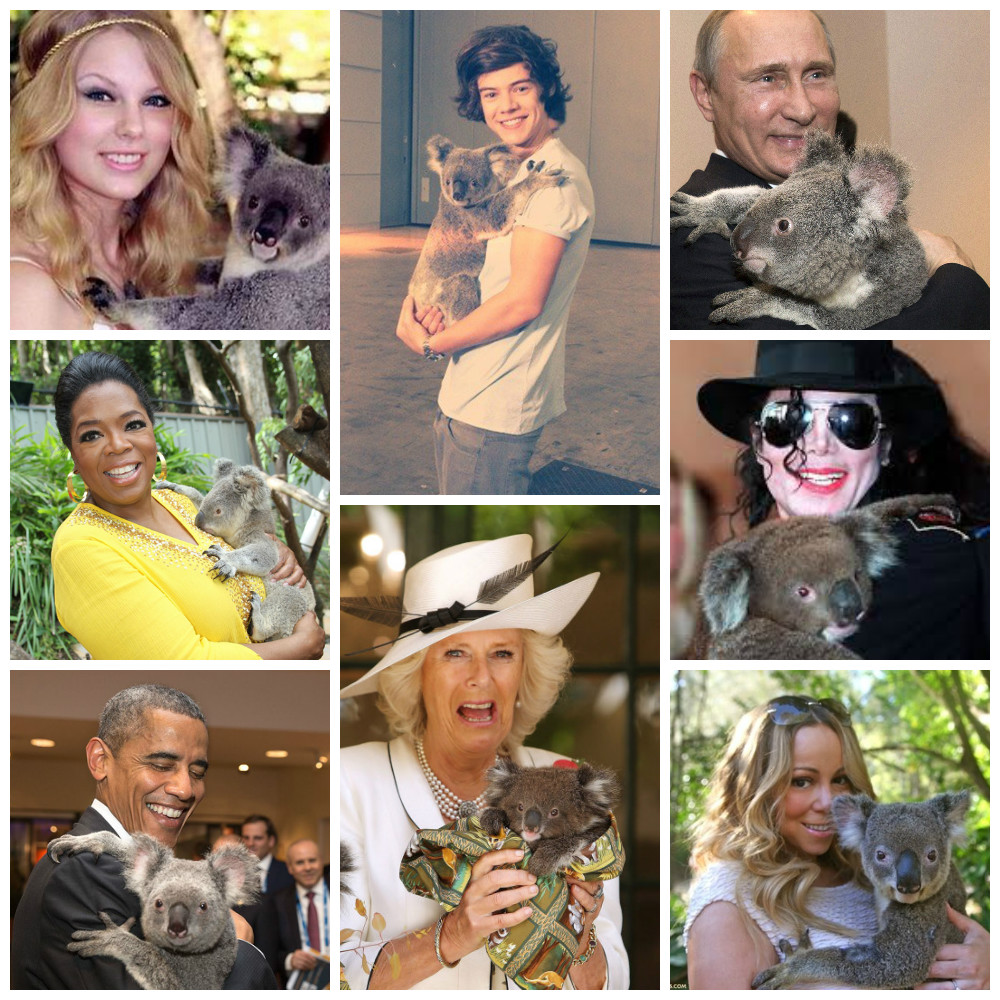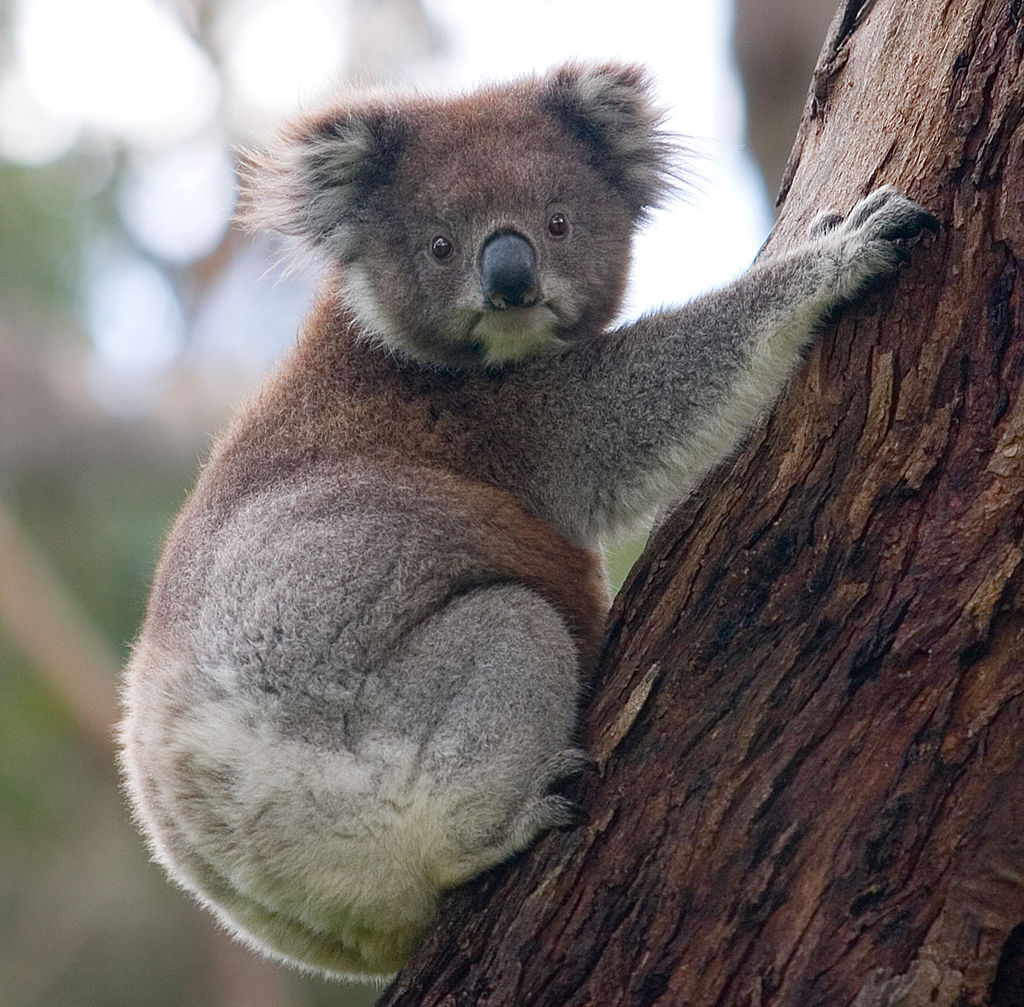
The Koala is one of the most recognizable and celebrated species in Australian fauna, inhabiting Eucalyptus woodlands and forests through out eastern Australia: from the SE South Australia across Victoria, Eastern NSW, and SE QLD. Koalas are one of the few Australian species that feed exclusively on Eucalyptus leaves and are partial to only a few gum tree species (not a highly nutritious or energy rich diet, hence all the sleeping!). The iconic Koala is celebrated in popular culture and are on the must-see list for almost every international tourist visiting Australia.

Unfortunately, Koala populations are being threatened by a number of factors including habitat loss (urban development, fire, and drought) and disease, including a highly infectious strain of Chlamydia; a sexually transmitted disease which can presents symptoms such as conjunctivitis and genital infections, causing individuals to be weak and vulnerable to other threats (predation, malnutrition, fire, etc.).
Across the Koala range of Australia; conservation groups, ecologists, wildlife organisations, national parks, and government departments are engaging in programs and methods to monitor, protect, and ensure Koalas continue to exist.
Bioblitzes and Citizen Science projects are a great way to get involved with Koala conservation and research, and the ALA supports a number of community projects which are happening RIGHT NOW! Below is a list of current and ongoing koala-focused projects:
KOALA COUNT 2015
National Parks Association of NSW
Koala Count 2015 is large-scale, national citizen science survey developed by the National Parks Association of NSW (NPA). The aim of the annual count is to build a comprehensive picture of koala numbers and locations across Australia. This year, they have have partnered with NatureMapr – an innovative public data collection software that brings together nature enthusiasts and conservation experts – to develop a new Koala Count app that makes data collection more robust and helps participants to record sightings more easily. The app is a free GPS enabled software that allows the user to upload sightings directly to the database. This data will then be uploaded to the Atlas of Living Australia.
Koala Count runs from 7-17 November 2015. For more information or to get involved, please visit: http://koalacount.org.au/
Great Victoria Koala Count
Victorian Department of Environment, Land, Water and Planning
If you are in Victoria on November 7 2015, you can take part in the Great Victorian Koala Count, the Victorian Government Department of Environment, Land, Water and Planning is calling on citizen scientists and Koala counters of the public to download the iOS and Android app to help count koalas on the day. Data collected from this event will be uploaded to the Atlas of Living Australia.
For further information on how to get involved and registration, click here.
Koala count-a-thon 2015
Redlands City Council
The Koala Action Group of SE Queensland recently asked members of the community to get out and about over the Oct 31 – Nov 1 2015 weekend to look for koalas in the Redlands area. The data collected from this event will be shared with the Atlas soon, in the meantime, you can learn more about this recent bioblitz here.
Tweed Council Koala Count
Tweed Shire Council
The Tweed Shire Council is actively involved in koala and koala habitat conservation initiatives. The Council has an ongoing Koala count program which can be joined here.
Friends of the Koala – Volunteers conserving northern rivers koalas
Friends of the Koala Inc. (QLD)
Seen a Koala in the Northern Rivers region of Queensland? The Friends of the Koala Inc. group are always keen to receive a sighting, which can be registered here.

Of course, you don’t need to limit Koala-spotting and reporting activities to certain times of the year or programs – you can upload a sighting to the Atlas of Living Australia directly or you can search for a wide range of bioblitz and citizen science projects on our website too.